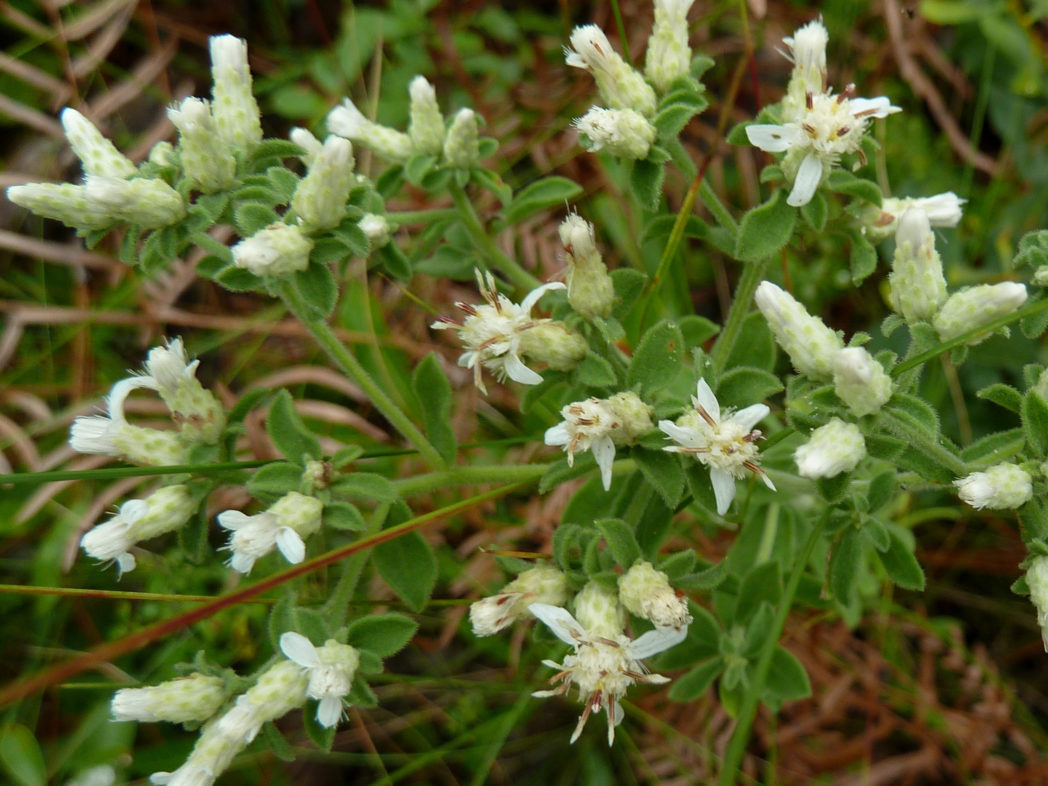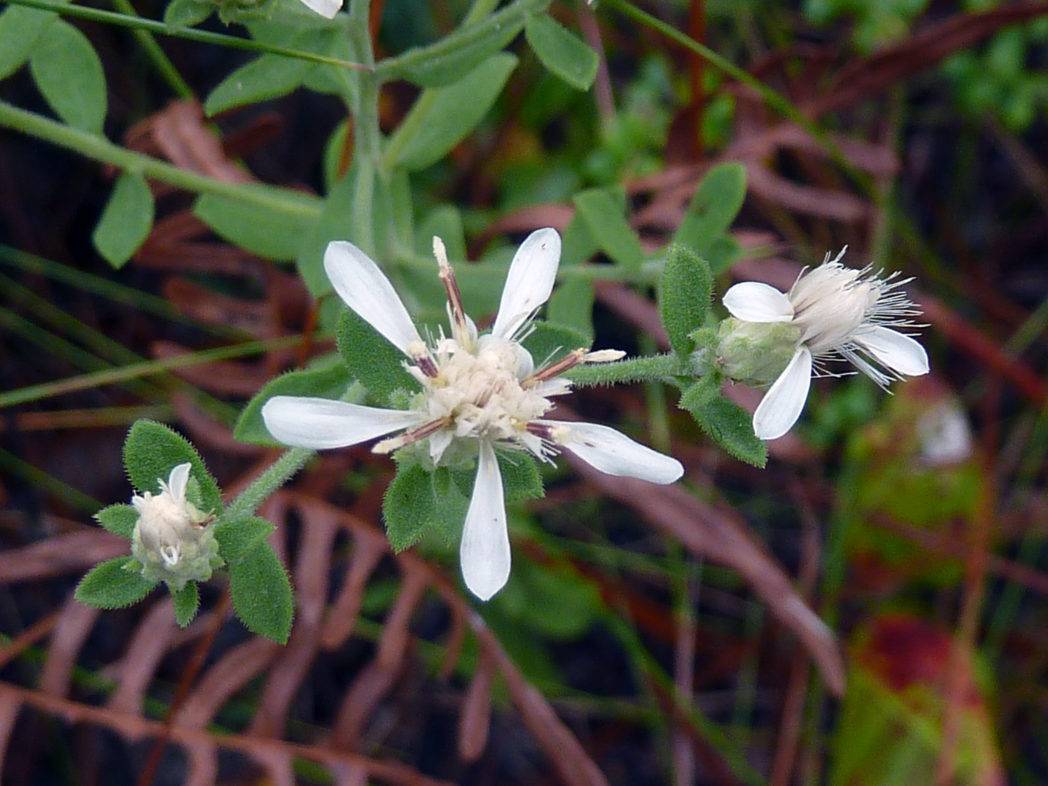Whitetop aster
Pictured above: Whitetop aster (Sericocarpus tortifolius) by Eleanor Dietrich. Click on terms for botanical definitions.View as a PDF.
Also known as Dixie aster, Whitetop aster (Sericocarpus tortifolius) is a perennial wildflower found in sandhills, pine flatwoods, upland mixed woodlands and forest margins throughout Florida. It blooms summer through fall and attracts many butterflies, bees and other pollinators.
Whitetop aster flowers consist of a compact center of yellowish disk florets surrounded by ray florets that are narrow and creamy white. Ray florets are few. Phyllaries are pubescent and white with green tips. They are more obvious before the flower blooms as they protect the flowerhead before it opens. Stems are branched and pubescent. Leaves are pubescent, spatulate to obovate and sessile. They have a thick, fuzzy appearance. Leaf margins are entire, but tend to curl. Leaf blades may twist upward. Leaves are alternately arranged. Fruit is a small achene that is also pubescent.

The genus Sericocarpus is from the Latin sericus or “silky,” and carpus, which refers to the fruit or seed. The species epithet tortifolius refers to the twisted (torti) leaves (folius).
Family: Asteraceae (Aster, composite or daisy family)
Native range: Nearly throughout
To see where natural populations of Whitetop aster have been vouchered, visit florida.plantatlas.usf.edu.
Hardiness: Zones 8A-11
Soil: Well-drained, sandy soils
Exposure: Full sun to partial shade
Growth habit: 2-3’ tall
Propagation: Seed
Garden tips: Whitetop aster is not commercially cultivated, but it is easy to propagate from seed. Be sure to get permission from the landowner before collecting seed. Its interesting foliage and attractive blooms make it a nice addition to a mixed wildflower garden.

